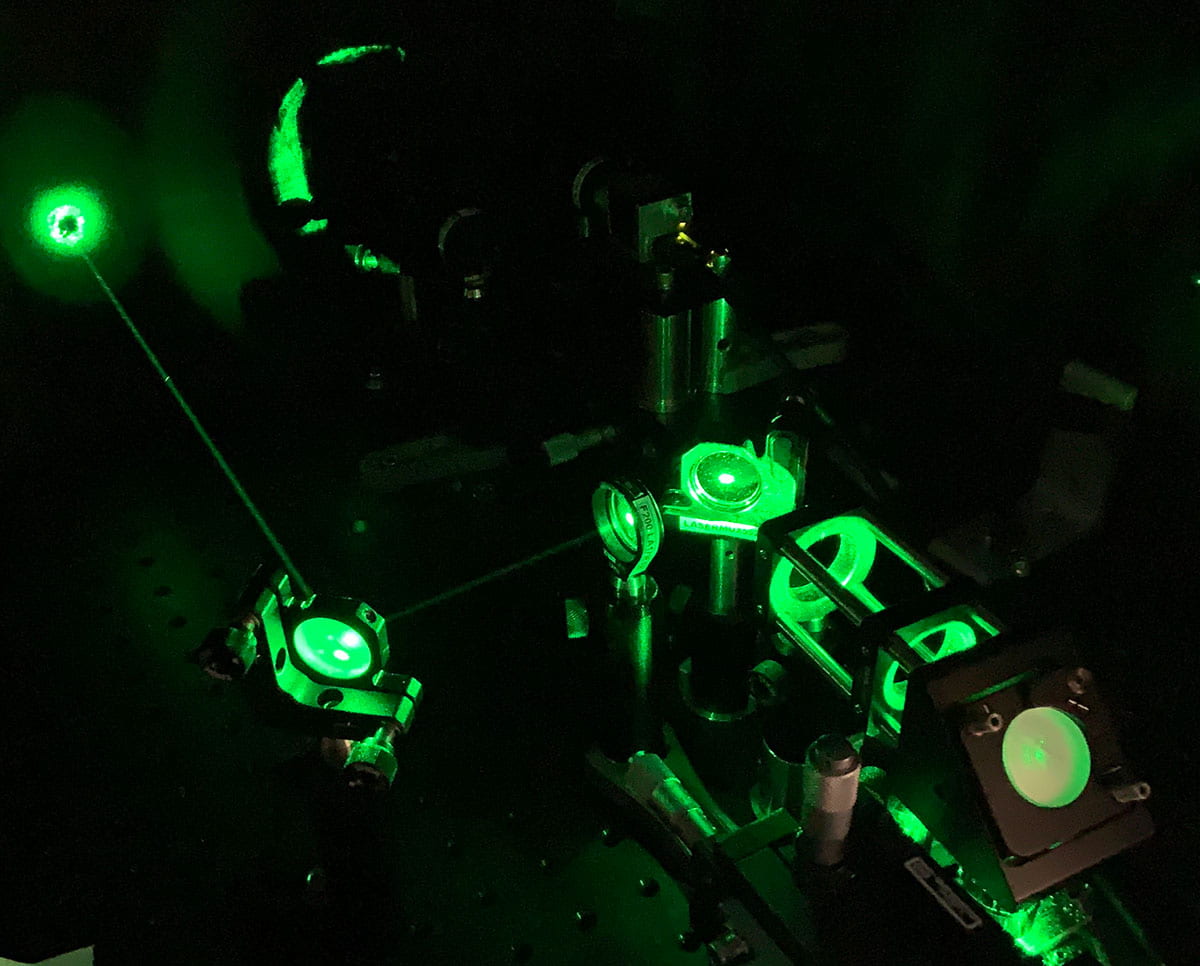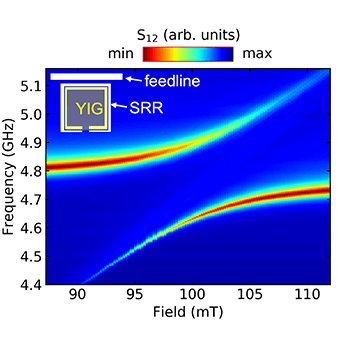Magnonic Materials for Quantum Device Applications



A key step to unleash the power of quantum technology is to develop scalable quantum building blocks that include quantum memories, interconnects, transducers, and detectors. Magnons are one potentially powerful tool for these functions.
A magnon is the fundamental excitation of a spin wave similar to a photon, which is the fundamental excitation of light. Just like a photon, a magnon with frequency ω carries the energy Ε = ħω. Due to strong exchange interaction in magnetic materials, a spin flip is energetically not favorable as compared to distributing the flipped spin over a chain of spins forming a magnon. As is shown in the top figure, magnons can be viewed as a wave in a magnetic solid, where individual electron spins at each atomic site coherently precess around the effective field direction. The tips of each of the spins form a spin wave whose wavevector and energy are controlled by a particular dispersion relationship defined by the crystalline structure, exchange and dipolar interactions, and the external magnetic field.
Just like electron spins, which are used to store information in magnetic random access memories (MRAM), magnons can also be used to store information. Due to their wave nature, magnons can propagate and interfere similarly to electromagnetic and acoustic waves. Since the phase information is preserved, magnons can therefore be used for coherent information processing. Moreover, the transfer of information by magnons does not involve the motion of electrons through the material, a salient feature that is important to reduce the energy consumption. In addition, magnons exhibit unique features for microwave quantum engineering such as non-reciprocity, which could be useful for noise-isolated qubit operation.
Hybrid quantum systems promise to advance quantum information technologies. Particularly important in this regard is to develop and understand the coupling between disparate quantum systems. Due to their highly tunable dispersion and the possibility to couple with different excitations including optical photons, phonons, and spins, magnons are a promising candidate for coherent information processing and transduction. For example, superconducting qubits, which generate microwave photons, are heavily pursued for quantum computer applications. Understanding the coupling between microwave photons and magnons, especially at the single quasiparticle level, is a key enabler for scalable quantum building blocks. Another example is color centers arising from atomic defects in diamond and semiconductors, which have been proven to be excellent quantum sensors with high sensitivity down to the single particle level and nanometer spatial resolution. These color centers are manipulated by controlling the spin excitations in the ground and excited states and their readout is achieved using optical photons. Since spin excitations in color centers can readily interact with magnons in nearby magnetic materials, magnons could be used to facilitate the interaction among distant color centers as quantum transducers. For all of these reasons, quantum magnonic material platforms and architectures could enable on-chip quantum networks and the realization of advanced magnon computing with quantum-tolerant excitation coherence.
The Quantum Magnonics group at UD develops magnetic materials (including van der Waals 2D magnets), heterostructures, and devices for quantum magnonics. The group also investigates the coupling between magnons and microwave photons, and nitrogen vacancies in diamond. Team members have expertise in the design and synthesis of magnetic materials and heterostructures, characterization of magnon dynamics and their coupling with microwave photons, and simulation of quantum transport and spin dynamics.
Participating Faculty: Xiao, Nikolic, Jungfleisch, Plechac, Law, Ku, Doty, Ni
